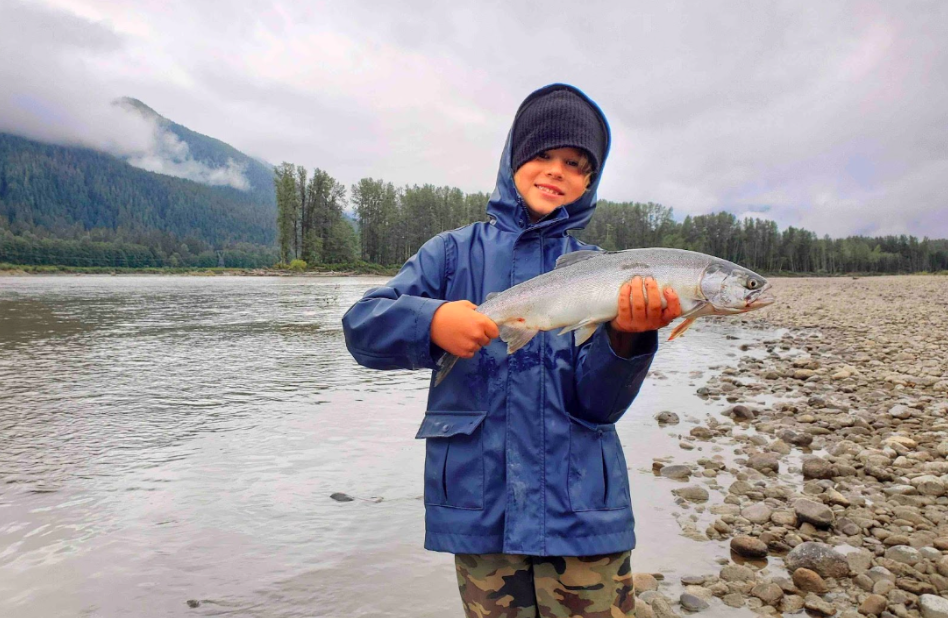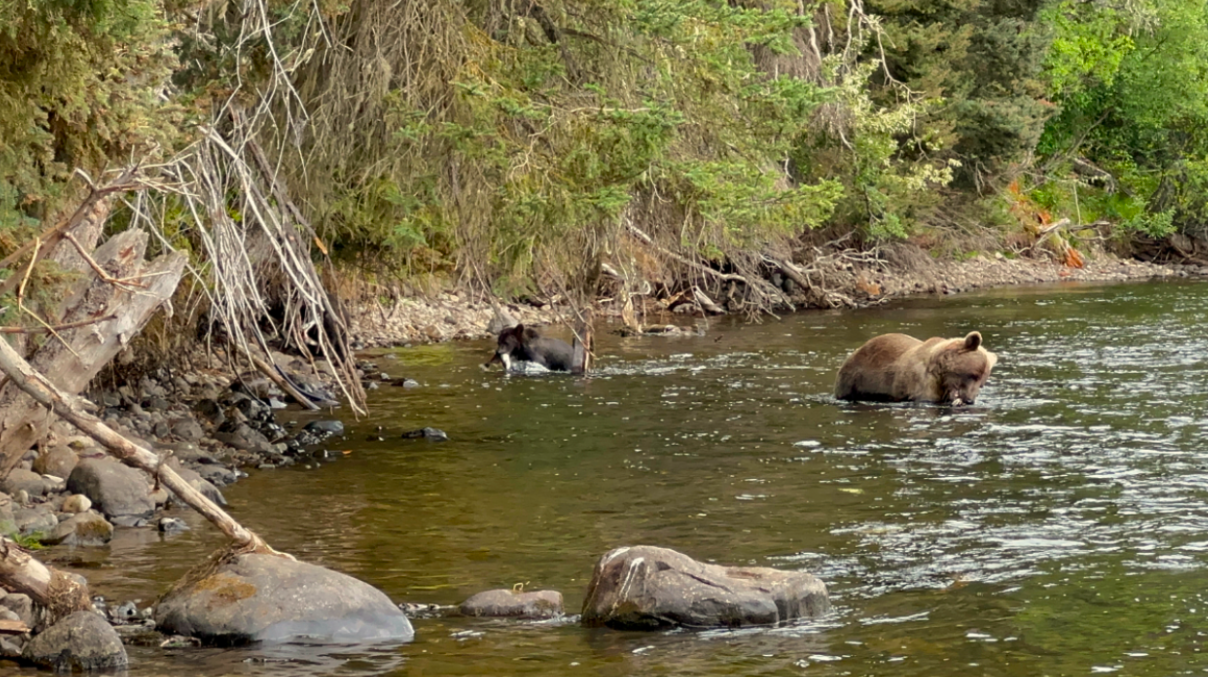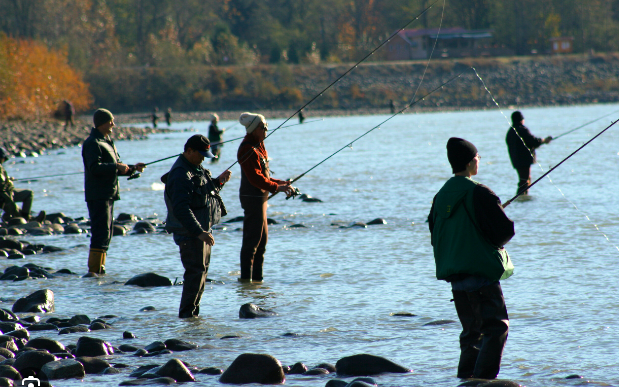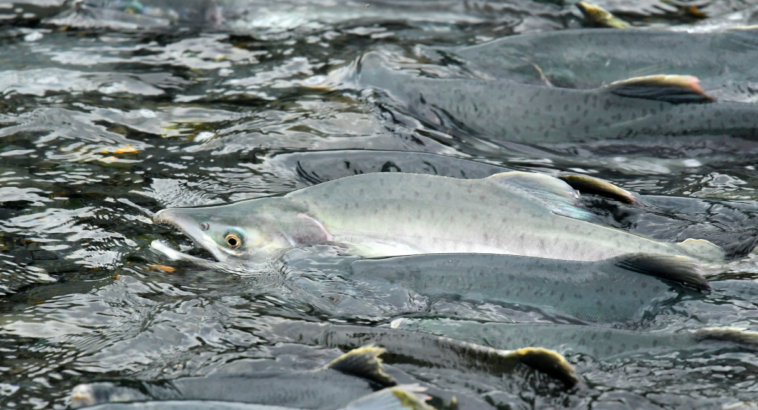From BC’s northernmost brooks to the mighty Fraser River in the South, provincial waterways are running with pink salmon as a massive population of two-year-old pinks returns to spawn the next generation.
The pink run on the Fraser River alone is about 40% bigger than was expected by the Pacific Salmon Commission.
“It’s overall good news, because there’s an abundance of fish coming back to our rivers. It’s good for people, the bears, and all the other animals that eat salmon in our watersheds.”
Aaron Hill, executive director of the Watershed Watch Salmon Society.
There’s a catch to this abundance. A new scientific paper suggests the dramatic rise in the number of pinks, many raised in hatcheries, spells trouble for other kinds of commercially and culturally important salmon, steelhead trout, and other animals from orcas to seabirds.
For now, however, the booming pink runs are being met with joy.

The bounty thrilled seven-year-old Will Sorochan when his uncle, Aaron Hill, took him fishing on the Skeena River. “He was out there catching fish, landing them all by himself, and he limited out,” marvelled Hill, executive director of the Watershed Watch Salmon Society.
In the South, sport fishermen flocked to the pink run on the Mamquam River near Squamish, where salmon surrounded their hip waders as they cast their lines into the river. One fly fisherman quipped, “It was impossible not to catch pinks.”
“It’s the biggest run we’ve seen in several years,” Hill told The Skeena. “It’s overall good news because there’s an abundance of fish coming back to our rivers. It’s good for people, the bears, and all the other animals that eat salmon in our watersheds.”
“Pink runs of this size decades ago were pretty normal, and it’s important to keep that in mind,” said Hill.

Today, though, the marine ecosystem is stressed by warming oceans and habitat destruction near inland spawning channels. Populations of some species, including sockeye salmon, some seabirds, and southern resident killer whales, are in precarious shape.
They all compete directly or indirectly with pinks for food in Pacific waters–and the study suggests pinks may be winning. Pinks now comprise 70% of all salmon in the Pacific, according to the scientific journal Marine Ecology Progress Series study.
“Although hatchery salmon may lead to net gains in commercial harvests in local fisheries, these gains can come at the expense of local wild populations.”
Marine Ecology Progress Series
Many of those pinks were artificially raised in hatcheries and then released into the ocean to compete with wild fish.
Releases of all kinds of Pacific salmon from hatcheries have increased since 1970 and now account for about 40% of the total salmon biomass at sea, noted the study. “Although hatchery salmon may lead to net gains in commercial harvests in local fisheries, these gains can come at the expense of local wild populations,” said the paper, because the hatchery fish co-mingle with depleted and at-risk wild populations from the Pacific Coast and Alaska.
“Hatcheries can have positive benefits, including helping rebuild weak populations,” notes the Pacific Salmon Foundation (PSF) website. But they also introduce risks, including reducing genetic diversity and beating wild species to the available food in the ocean.
Canada’s contribution of hatchery salmon to the Pacific Ocean is relatively small, at about 6% of all fish from hatcheries, notes the PSF. “But enormous production of pink and chum salmon by Alaska, Russia, and Japan are potentially contributing to major food competition for Canadian wild and hatchery-reared salmon.”

The new study backs up the foundation’s concerns about hatcheries.
“The North Pacific Ocean might seem like a big place, but there’s a limited amount of food out there. Flooding it with hatchery fish is having an impact on other species populations.”
Aaron Hill, executive director of the Watershed Watch Salmon Society.
The study was made possible by the fact that Oncorhynchus gorbuscha salmon–popularly known as “pinks” or “humpies”–have life cycles of two years. In the odd-numbered years, including 2023, their numbers can be 25 times greater than in even years.
That cycle allowed researchers to study the impact of boom years for pinks on the rest of the ecosystem to help understand the ocean’s “carrying capacity,” or resources available to all species.
If the food taken by “billions of additional salmon released from industrial-scale hatcheries pushes closer to the ocean’s carrying capacity, this may have deleterious effects on wild salmon as well as non-salmon species, such as decreased survival rate, productivity, and body size,” their study warned.
Hatcheries, considered necessary for fish conservation just a generation ago, are now viewed as complicated and controversial.
“The North Pacific Ocean might seem like a big place, but there’s a limited amount of food out there,” said Hill. “Flooding it with hatchery fish is having an impact on other species populations.”







There are 0 pinks raised in hatcheries in BC. As of last year there have been 85% reductions in chum salmon production in all of BC. The only fish raised in hatcheries in BC are for the recreational fisheries accept the Conuna and Robertson creek facility’s. there were upwards of 30 million wild pinks this year of which 20 million should of been harvested by the commercial sector. The infrastructure to process these fish doesn’t exist in BC any longer. If the pinks are an environmental and ecological problem. Try encouraging commercial fisheries instead of constantly making them the problem!
The following B.C. hatcheries raise pink salmon:
1. Chehalis River Hatchery
2. Quatse River Hatchery
3. The Quinsam River Hatchery
4. The Nanaimo River Hatchery
And more. So seems you have your facts wrong.